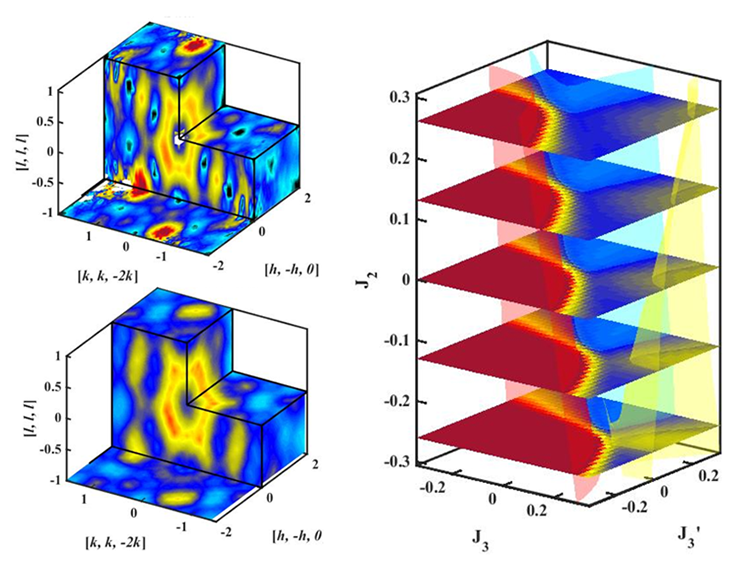June 1, 2019

Quantum materials encompass a vast array of materials whose properties can only be explained by quantum rules. Contemporary research has developed from a nexus of topology, quantum field theory, quantum information science combined with advances in materials’ science. Quantum materials could have fundamental and far reaching impact on technology.
Neutrons are uniquely powerful in providing quantum beams that interfere in space and time at the atomic level giving a picture of the cooperative quantum behavior in materials. We focus on undertaking experiments and modeling quantum and frustrated magnetic states to gain insight into new states of matter and their excitations. Often these have new characteristics such as topological ground states and quasiparticles carrying fractional quantum numbers and need new experimental protocols, instrumentation, and analysis techniques. The activity brings researchers together to develop these new approaches and undertake new kinds of experiments.
Challenges we are working on
Exotic electronic states such as Weyl semimetals provide exceptional transport properties promising breakthroughs in electronics. Here we are investigating how the magnetism can control the topological behavior. In spin liquids new fractional quasiparticles arise and we study how these can be measured and also the formation of new ground states. Finally, in highly entangled states, including at quantum critical points new phenomena such as Higgs modes appear. We are working on how to manipulate these states and to extract entanglement information from the scattering measurements.
New approaches that we are working on involve application of machine learning and high performance computing to model materials and analyze experiments, ultrasensitive magnetic noise measurements, high pressure, and out of equilibrium studies.
Collaborations
ORNL; University of Tennessee, Knoxville; Louisiana State University; MIT; Max Planck Group; PTB Berlin; University of Virginia; Penn State; University of Cambridge (UK); CONICET (Argentina); Helmholtz Center Berlin; Xavier University; University of Toronto; Duke; Los Alamos National Laboratory; National High Magnetic Field Laboratory